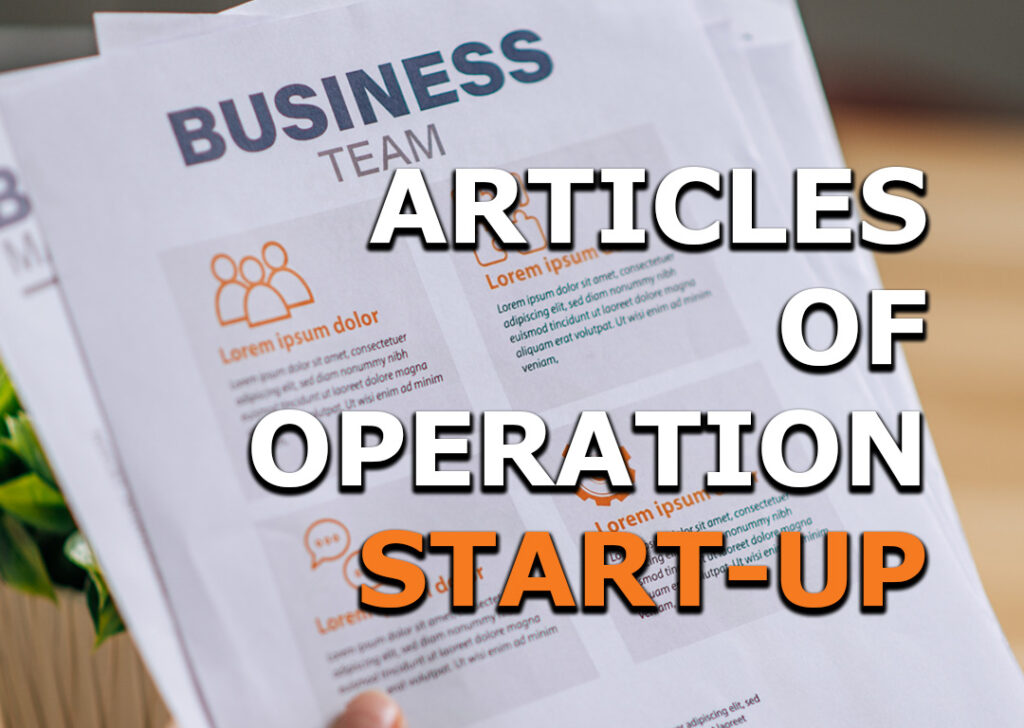Filing Articles of Organization is usually straightforward, but small mistakes can cause costly delays.
Your Articles of Organization (sometimes called a “Certificate of Formation” or “Certificate of Organization”) is the official document you file with your state to legally form your LLC.
Think of this document as your LLC’s birth certificate—get it right the first time, keep it updated, and pair it with a solid Operating Agreement to protect your business—without it, your LLC doesn’t exist in the eyes of the state.
While each state has its own rules, here’s a detailed breakdown of what to include and tips to avoid common mistakes.
LLC Filing Preparation Checklist
- Check State Requirements – Every state’s form and filing process is different. Download your state’s official Articles of Organization form from its business filing agency (usually the Secretary of State).
- Confirm Your LLC Name is Available – Run a business name search on your state’s business registry to avoid rejection.
- Understand Processing Times – Some states process filings in 1–3 days; others take weeks unless you pay for expedited service.
- Prepare Required Personal and Business Information – Information you’ll need to file:
- LLC name and business address
- Registered agent name and address
- Organizer(s) name(s) and address(es)
- Management type (member-managed or manager-managed)
- Effective date (immediate or future date)
- Duration of the LLC (perpetual or a set end date.
- Draft an Operating Agreement (Optional but Recommended) – Decide on ownership percentages and profit-sharing, outline decision-making processes and roles, and set procedures for adding or removing members.
Key Sections of the Articles of Organization
Article 1: Name
- Requirement: Include the legal ending (“LLC,” “L.L.C.,” or “Limited Liability Company”).
- Tips:
- Avoid names that are too similar to existing businesses—states will reject duplicates.
- If you want a public-facing name different from your legal name, you’ll need a DBA (Doing Business As) later.
Article 2: Principal and Mailing Address
- Principal Address: The official street address for your business.
- Mailing Address: Where correspondence is sent (can be a P.O. Box if allowed).
- Tip: If you run your business from home and want privacy, consider using a virtual office or registered agent address.
Article 3: Registered Agent
- Definition: The individual or service authorized to receive legal documents.
- Requirements:
- Must have a physical street address in the state.
- Must be available during normal business hours.
- Tip: Many owners use a professional registered agent service to protect their personal address from public records.
Article 4: Statement of Acceptance by Registered Agent
- Purpose: Confirms the registered agent has agreed to serve in that role.
- State Variations: Some states require a signed acceptance form; others don’t.
- Tip: Double-check your state’s acceptance requirements to avoid delays.
Article 5: Duration
- Options:
- Perpetual: Default for most LLCs—exists until dissolved.
- Fixed Term: Ends after a set number of years or on a specific date.
- Tip: Choose “perpetual” unless you have a specific end date for the business.
Article 6: Management
- Two Choices:
- Member-Managed – Owners run the day-to-day.
- Manager-Managed – Owners appoint one or more managers.
- Tip: If you have multiple members but want one person in charge of daily decisions, choose manager-managed.
Article 7: Members
- Requirement: Some states require listing members; others don’t.
- Tip: If privacy matters, list only the minimum required information and keep detailed member info in your Operating Agreement instead.
Article 8: Initial Contributions
- Definition: What members give in exchange for ownership (cash, property, services).
- Tip: This is often better detailed in the Operating Agreement, but if listed in the Articles, be specific about amounts and assets.
Article 9: Purpose
- Options:
- General Purpose: “To engage in any lawful business in the state of [X].”
- Specific Purpose: Required in certain industries or states.
- Tip: If your business might pivot in the future, use a general-purpose statement to avoid future amendments.
Article 10: Liability
- Purpose: Confirms that members/managers are not personally liable for the LLC’s debts.
- Tip: While implied by law in most states, including it in the Articles strengthens legal protection.
Article 11: Organizer
- Definition: The person filing the Articles of Organization.
- Tip: The organizer doesn’t have to be a member—it could be an attorney, business formation service, or another authorized person.
Filing Tips for Success
- Use the State’s Official Form – Even if you draft your own, cross-check with the state’s template to ensure compliance.
- Pay the Correct Fee – Fees range from ~$40 to $500 depending on the state.
- Keep a Copy – Store the approved Articles of Organization with your LLC records.
- Follow Up with Your Operating Agreement – Not always required by law, but essential for internal governance.
- Check for Ongoing Requirements – Some states require annual or biennial reports right after formation.
Common Mistakes to Avoid
- Using a business name that’s already taken.
- Forgetting to include the LLC designation (“LLC” or “Limited Liability Company”).
- Listing a P.O. Box for the registered agent address when a physical address is required.
- Not signing the Articles (yes, it happens!).
- Selecting the wrong management structure and having to amend later.
Post-Filing Next Steps
- Apply for an EIN from the IRS.
- Open a business bank account.
- Check for state or local licenses and permits.
- Register for state taxes if required.
How Form Wise Solutions helps: We obtain your EIN, provide resources for business banking, and guide you through necessary licensing and tax registrations.
Start Your Business with Confidence
Our Business Startup Services takes the hassle out of forming your LLC or corporation. From choosing the right structure and filing documents to registering your EIN and staying compliant, we handle the details—so you can focus on building your vision. Save time, avoid costly mistakes, and launch your business the right way.




